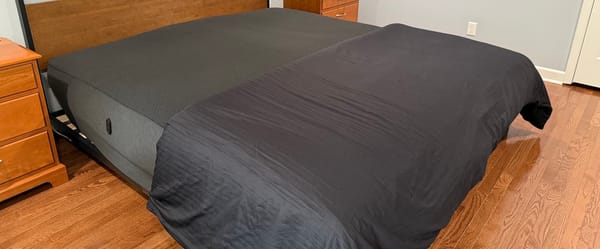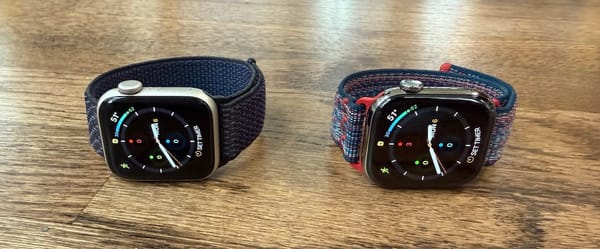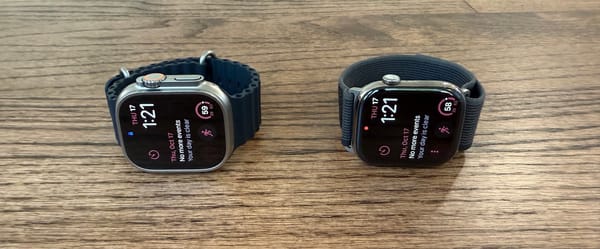Oura Ring 3 vs. Whoop 4.0: What's best for sleep tracking?
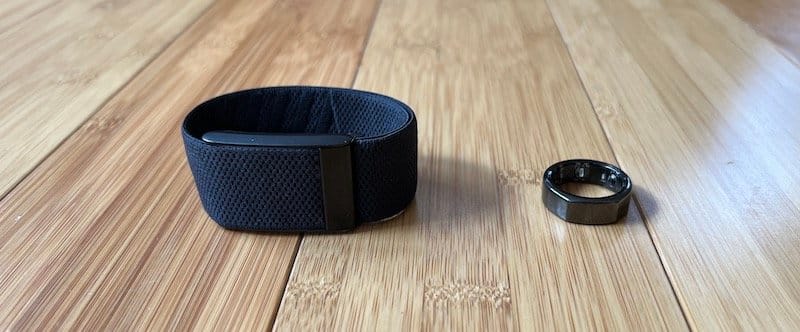
After months of testing, I determined that Oura Ring Gen 3 is a solid companion to Apple Watch for sleep tracking, but it’s not enough to be a full-fledged fitness tracker by itself.
Whoop 4.0 has the potential to be the ultimate all-in-one sleep and fitness tracker that focuses on recovery, but I have many questions about its accuracy.
The bottom line? Both fitness trackers are on the expensive side, but each brings something interesting to the table that should be considered.
Design
Oura
I appreciate Oura’s unique design because it’s the only fitness wearable that comes in ring form.
Oura sends a fitting guide in the mail after purchasing your ring. Oura will send the size you need once you tell them your size. The whole process takes a couple of weeks.
Oura is intended to be worn 24/7 and needs to be tight on your finger. I fitted mine for my right-hand ring finger, but the skin contact isn’t strong enough to properly track my sleep for the whole night because there will be periods with missing data. Fortunately, it slides on my left index finger with a tighter fit and provides more accurate data.
Unlike adjustable wrist wearables, Oura can’t be adjusted. Oura can be worn on the pointer, middle, or ring finger. Hopefully, at least one finger will provide a nice fit at all times even if your fingers change in size due to a weight change.
The ring looks cool, but I don’t love wearing a non-wedding ring on my finger during the day.
For sleep time, once you get used to wearing it, you forget it’s there. It’s a better solution than a wrist device.
Because Oura isn’t ideal for activity tracking, which we’ll get into, lots of people in the community wear it for sleep exclusively. If you’ve got another device to track activity, there’s almost no advantage to wearing Oura during the day.
If you opt to wear Oura during the day, it gets in the way for certain workouts, like lifting weights, where it’ll be prone to scratching too. You’ll have to monitor and manage its five-day battery life as well.
Whoop
Whoop is meant to be worn on your wrist, but it sits higher than a watch. It needs to be about an inch away from your wrist bone to get proper heart rate measurements.
If you don’t want Whoop on your wrist, there’s a bicep band option, but I didn’t love it.
I don’t find Whoop as comfortable as the Apple Watch because it needs to be tight and the entire base needs skin contact. The band materials aren’t as premium as the Apple Watch either.
You can get used to Whoop 24/7, but even after a few months of wearing it, I still don’t love sleeping with it. It’s too big.
Whoop is meant to be worn 24/7 and has a five-day battery. Whoop has a smart “on-the-wrist” charging approach, so battery life is rarely a concern. Just slide on the battery pack whenever you need juice and it charges while you wear it. If you don’t want to have the battery pack attached to your wrist, change Whoop off your wrist.
Sleep & Recovery
Oura
The Oura app is more user-friendly than Whoop’s app because it has fewer options. Plus, the syncing between the ring and the app is almost instantaneous, while it takes Whoop up to 10 minutes to sync and calculate sleep.
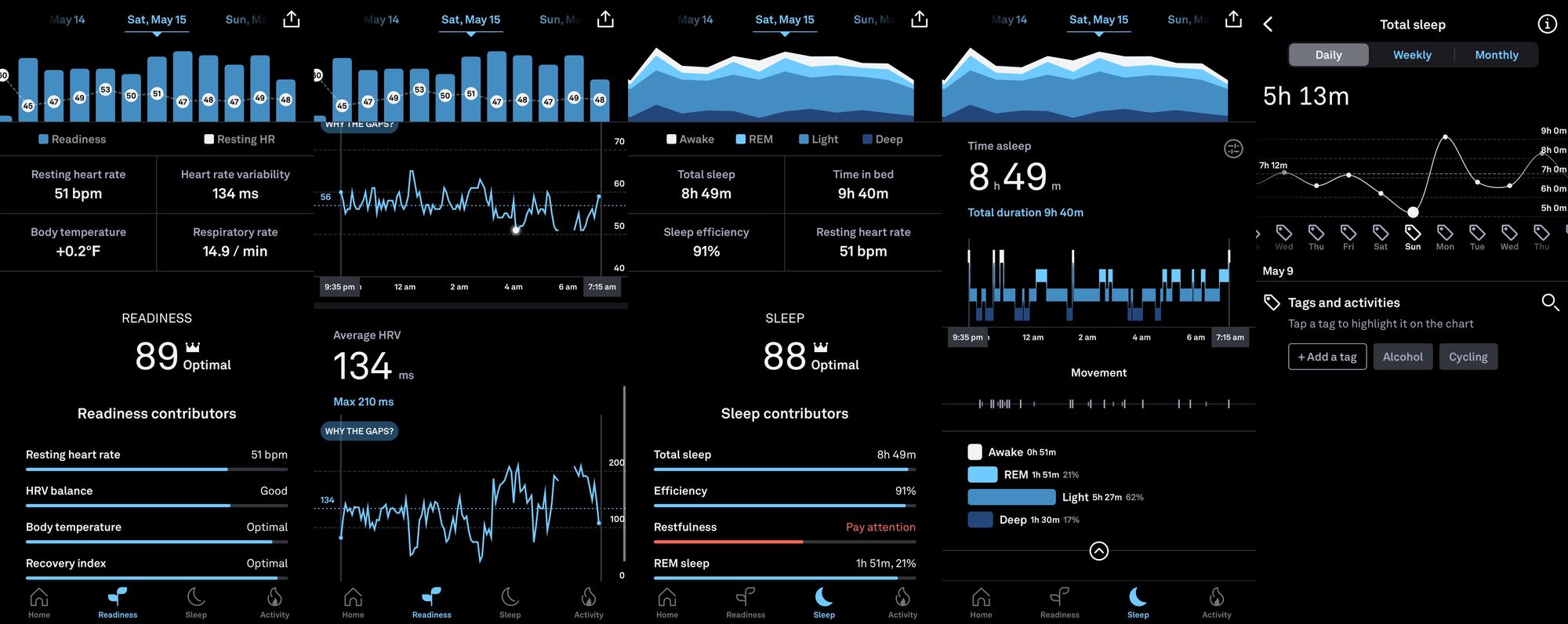
Oura automatically records when you fall asleep and wake up, then breaks it down into light sleep, REM sleep, or deep sleep.
Oura nails the total amount of sleep that your body gets. Sleep cycles are hard for any wearable to track correctly, but based on my experience with other sleep trackers and knowing my body well, Oura seems to do a better job compared to Whoop.
Oura records your resting heart rate, heart rate variability, body temperature, and respiratory rate continuously throughout the night. Interestingly, rather than just one HRV reading like Whoop, Oura creates an average by recording your HRV throughout the night, which seems to be a smarter approach.
These four variables are compared to your baseline metrics and used to determine your readiness score. Oura’s readiness score is a number out of one hundred, and the score seemed to match with how I felt physically each morning.
When I had COVID, it was really interesting and cool to see that Oura Ring knew something was wrong. My HRV plummeted to levels that it’s never at and my body temperature increased by four degrees. It was amazing to track my body’s recovery each day after testing positive.
Oura has a “Trends” section that measures how different variables affect your sleep and recovery. For example, I add “Late Caffeine” and “Alcohol” tags to my days to see how those inputs affect my readiness score. Each time you exercise, a tag with the type of workout is automatically attached to the day too. It was interesting to see my assumptions about alcohol be proven by data.
The bottom line? Oura matched how I felt physically more often than Whoop.
Whoop
The Whoop app is centered around strain and recovery scores.
Just like Oura, Whoop automatically tracks when you fall asleep and wake up. It categorizes your sleep into four categories: awake, light sleep, REM sleep, and deep sleep.
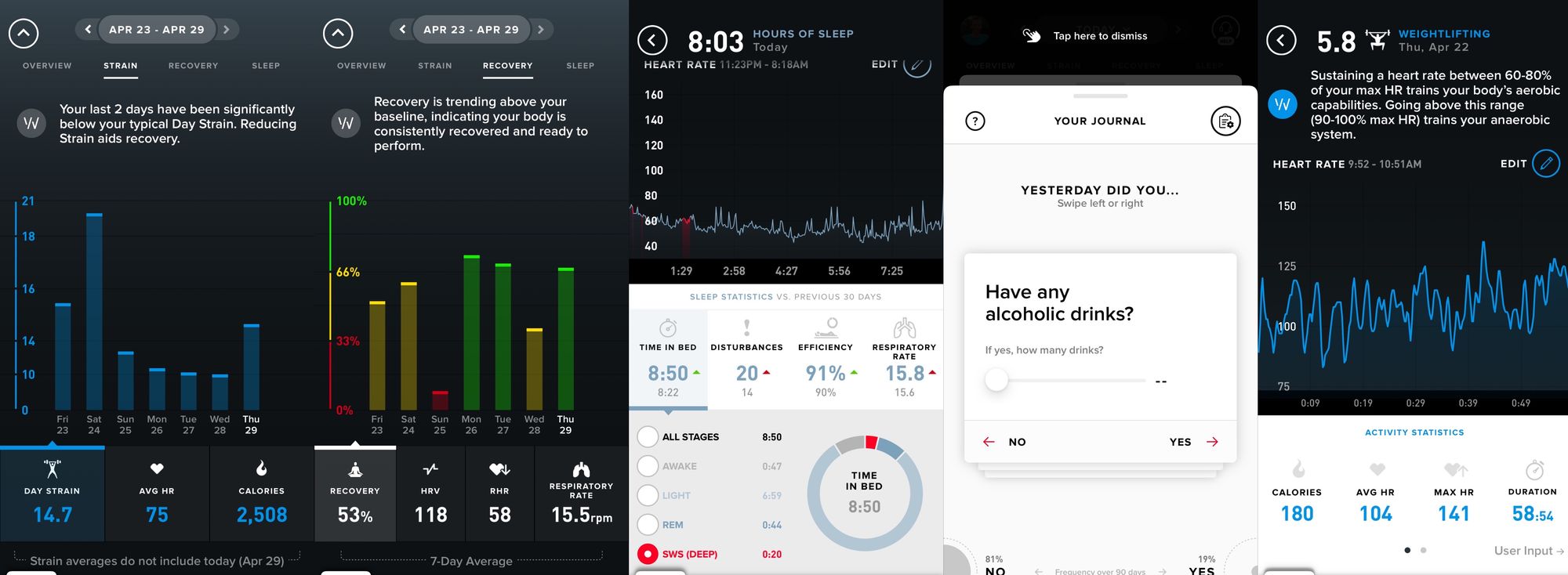
Whoop does a good job of calculating how long you slept, but the sleep cycles are way off. For example, I consider myself a healthy adult, which means I should get around 1-2 hours of deep sleep per night, but I’m consistently under an hour with Whoop.
Deep sleep isn’t critical knowledge because Whoop measures heart rate variability, resting heart rate, and respiratory rate and compares them to your baseline number to determine how recovered your body is.
HRV is one of the most important metrics to determine how recovered a body is according to science. HRV seems to be Whoop’s primary variable, but because Whoop HRV’s calculation is weighted towards your reading during the final deep sleep cycle and it struggles to figure out when you’re in deep sleep, the entire recovery metric gets messed up.
Why is Oura’s HRV approach more accurate? Over the last few months, there were several days where I felt amazing physically, yet Whoop said I was 25% recovered. During these days, my resting heart rate and respiratory rate always matched between the two apps, but the biggest discrepancy among the primary metrics was HRV.
Whoop’s best recovery feature is the daily questionnaire. You choose which questions you want to be asked, then answer yes or no to the questions each morning. The questions are based on variables and inputs from the previous day (caffeine, alcohol, marijuana, screen time, etc.) After a few weeks of answering the questionnaire, Whoop crunches the data and finds the correlations for you.
Activity Tracking
Oura
Oura tracks your movements to determine how much energy you’ve expended, but it doesn’t use heart rate, which disqualifies it as an accurate activity tracker.
Oura doesn’t track your workouts automatically, but you can log exercise by recording the duration and intensity level, then it’ll guesstimate calories burned.
Oura is meant to be worn all day, but because of Oura’s lackluster activity tracking, I recommended an Apple Watch with Oura. Activity data from your Apple Watch can be imported into the Oura app via Apple Health to give Oura an idea of how much you’ve moved.
Oura’s sleep data can be exported into the Apple Health app too.
Oura promised a daytime and workout heart rate monitoring with the 3rd generation model, which could make it a viable activity tracker. Unfortunately, the feature still hasn’t launched even after six months since the product launch.
Whoop
Whoop does an amazing job of automatically tracking workouts once it detects heart rate spikes. Just manually log your first few workouts, then it learns which exercises you do.
Whoop’s main objective is to make sure you don’t overtrain. Whoop has a strain score, which shows how hard you should push your body while you workout. It helped slow me down a few days.
Whoop has a few shortcomings as a fitness tracker:
Whoop’s heart rate measurements are accurate during cardio activities, but lose accuracy during weight lifting, which throws off the recovery score.
Whoop lacks a GPS, meaning that it doesn’t record miles run or biked without bringing your phone with you.
Overall, Whoop’s a solid fitness tracker because it uses your heart rate to determine calories burned and your strain score, while Oura doesn’t factor in heart rate yet. But Apple Watch benefits from having a screen and tends to be more accurate.
Price
Whoop
Whoop requires a minimum of six-month payment upfront. It’s $30/month, which works out to $180 for six months.
If you pay annually, the price moves down to $25/month, which is $300 upfront.
Or the 24-month plan is $20/month, which is $480 upfront.
Oura
The base Oura ring is $299 for a shiny silver or black finish. It’s $399 for the stealth or gold finish.
The second generation Oura Ring had just the flat fee, but with the third generation, Oura moved to a subscription model. I hate this.
You get your first six months free, but after that it’s $6/month. Technically, you can use Oura without the subscription service, but you don’t even get basic sleep cycle and HRV data without it.
(Generation two Oura Ring owners were grandfathered in and get a free lifetime membership, which is great for me! But it’s awful for new users.)
For two years of ownership, Oura Ring ($407) and Apple Watch SE ($279) together are the more expensive ($686) than two years of Whoop’s ownership ($480).
Oura still hasn’t shipped the fully capable activity tracker, so it’s tough to tell if you’d be able to get by without supplementing with an Apple Watch. But even if Oura’s fitness data is perfect, I’d still miss the benefits of having the screen on Apple Watch.
Which is best for you?
Sleep cycles are hard to determine for all sleep trackers and shouldn’t be relied on. Oura and Whoop determine time slept well, but you can get time slept more affordably from an Apple Watch, Fitbit, Amazon Halo, among others.
Where Oura and Whoop shine are calculating resting heart rate, heart variability, and respiratory rate to determine sleep quality and how recovered your body is.
If you’re having sleep issues or trying to get your health in order, sleep tracking with Oura or Whoop should help to determine what variables need to be fixed to improve sleep and recovery.
Oura Ring

- Design (B+)
- Recovery (A+)
- Activity Tracking (F)
Get Oura Ring if you want the most comfortable and accurate way to track your recovery. It shouldn’t be used as an activity tracker, but it's great for Apple Watch owners who want to track sleep without wearing a watch to sleep.
Whoop Strap 4.0

- Design (B)
- Recovery (A-)
- Activity Tracking (C+)
Get Whoop Strap if you want an all-in-one fitness and sleep tracking device. Whoop has accuracy issues when determining deep sleep and HRV, but even if Whoop’s data was perfect, it’s not worth $480 for two years of ownership when comparing it to other options.

